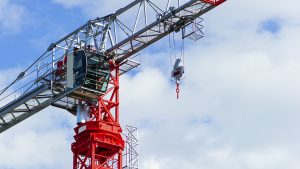Strides have been made over the past several years to strengthen the BC Construction Safety Alliance (BCCSA) silica control tool for the roadbuilding sector with more industry data contributed.
Dawson Construction, part of the Kamloopsã Dawson Group, has been supplying data to the tool after the company learned it did not have exposure information on asphalt plant operations. The mobile units worked onsite in conjunction with rock-crushing equipment.
ãDuring this task, the dust is quite visible,ã said Mike Jolly, Dawson Groupãs director of health, safety and environment.
Jolly said the company wanted to find out the exposure levels involved onsite to better protect its workers.
Silica is found in a number of roadbuilding and construction materials such as concrete, rock or old asphalt, and once airborne, particulate can cause lung scarring and lead to cancer.
ãWe want to understand what the level of exposure is and that takes a lot of data,ã Jolly said and that meant taking samples in circumstances where none existed. ãWe decided to take the initiative.ã
The process was not inexpensive as the company equipped onsite workers such as a loader operator, control booth operator and the asphalt plant technician with high-vis vest that had sampling pumps and filters to wear during their shifts.
The samples detailed the employeeãs shift, location, type of work performed, and were shipped to a lab in Edmonton.
Jolly worked with BCCSAãs health and exposure scientist Dr. Melanie Gorman-Ng to ensure sampling was done correctly and the labãs data results then shared with BCCSA.
ãWe are planning to do more this year,ã Jolly said, adding roadwork should begin in April.
Data collected under varying conditions provide greater diversity and will benefit the industry when using the tool, said Jolly. The roadwork can also include concrete repairs, where silica can occur, such as around bridges.
The BCCSA first launched its web-based silica monitoring tool in 2017 aimed at providing the construction sector an easy, free alternative to individual site testing in order to meet WorkSafeBC exposure compliance levels.
Ammar Kavazovic, BCCSA director of programs and initiatives, said: ãOften smaller employers donãt have the technical skills or resources to do this.ãô
The tool allows companies or employers to create an account, enter information on a new project and when it is happening. The tool then walks through the project step by step asking what materials are being used, exposure time of employees and indoors or outdoors environment.
The data base will then calculate the exposure rate.
ãNinety-nine point nine times you will be over the limit,ã said Kavazovic. ãB.C. has one of the lowest (allowable) exposure rates in the world.ã
The tool assumes the contractor has a mitigation plan and as that information is entered into the system, a new exposure rate can be calculated until an acceptable limit is reached.
The plan may range from exhausting dust to personal protection gear such as respiratory devices.
The tool then takes all that information ã plus the preventative measure plan by the contractor – and generates an exposure control plan to be followed onsite.
Approximately 7,000 plans have been generated.
The toolãs success in B.C. prompted the Alberta Roadbuilders and Heavy Construction Association (ARHCA) to contact the BCCSA and ask for a similar but separate tool to be built.
Kavazovic said B.C. was able to share its information with the ARHCA but also carry out some sampling and devise an Alberta tool that allowed roadbuilders and heavy construction contractors to determine exposure levels.
A separate platform was needed as Albertaãs occupational health regulations differ from B.C.ãs, Kavazovic said.
The Alberta tool was launched in late 2022, Kavazovic said. But, the sampling data collected in Alberta has also been loaded into the B.C. toolãs database and provided further and more comprehensive information on exposure rates under the different menu options.
ãOne of the things we are constantly doing is reaching out to employers who have a sampling task,ã he said, adding the tool provides that if the task is not found under the various menu headings, the tool links to a site where the company can request a BCCSA sampling be undertaken.
Currently, the B.C. tool comprises 20,000 samples which have resulted in 5,000 to 6,000 data points that are actively used for tasks relating to construction and roadbuilding.
In 2021, 25 per cent of users were large employers (100 employees plus); 32 per cent were medium sized employers (20 to 99 employees); and 22 per cent were smaller employers (19 employees or less). There exists no information for the remaining 21 per cent of employees.











Recent Comments
comments for this post are closed